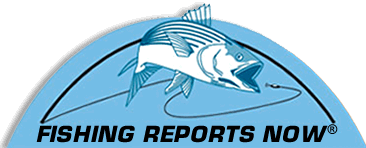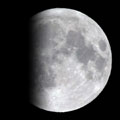Last Chance to Protest Fluke Cut
Editor's Note: Tom Fote from the Jersey Coast Anglers Association in an e-mail said this about the below announcement: "I have already been told that there will be written comments sent in by certain Environmental NGO's calling for the smaller quota on summer flounder because of the recommendations of the Monitor Committee. We need to get the recreational groups to send in their comments supporting the higher quota of 15.77 million. Even though 15.77 million is a disaster it is better than 12.90 to 11.64 million pounds recommended by the Monitor Committee. The NMFS will probably publish the rule before the joint meeting of the MAFMC and ASMFC from December 11-13 at Holiday Inn Harmon Meadows, 300 Plaza Dr., Secaucus, New Jersey 07094."
From the National Oceanic Atmospheric Administration (NOAA)
Fisheries Service:
FOR IMMEDIATE RELEASE
November 9, 2007
Contact: Susan Buchanan
301-713-2370
NOAA Proposes Limits for Three Fisheries to End Overfishing
NOAA Fisheries Service today proposed limits on fishing three key species in order to end overfishing and promote rebuilding of the stocks. The proposal is based on scientific analysis and recommendations of the Mid-Atlantic Fishery Management Council and the Atlantic States Marine Fisheries Commission. The proposed 2008 total allowable landing limits are:
• Summer Flounder – 15.77 million pounds, 8 percent less than the 2007 limit of 17.11 million pounds;
• Scup – 7.34 million pounds, 39 percent less than the 2007 limit of 12 million pounds; and
• Black Sea Bass – 4.22 million pounds, 16 percent less than the 2007 limit of 5 million pounds.
While all three species support commercial and recreational fisheries, summer flounder is the most prevalent of the three throughout the New England and Mid-Atlantic regions. The summer flounder stock has increased since 2000, when the rebuilding effort started. However, it is still subject to overfishing and still remains short of being rebuilt. Federal law requires that overfishing end and the stock stay on track with its new rebuilding schedule.
“We are committed to ending overfishing, and the Council and Commission’s recommendations lead us there while striking an appropriate balance with economic activity,” said William Hogarth, assistant administrator for NOAA Fisheries. “Summer flounder is a particularly important stock and we will continue to monitor all aspects of the fishery closely and take action as appropriate.”
Since 2000, recreational fishery harvests have exceeded their annual limit in most years. NOAA recently urged the Council and the Commission to look for more effective approaches for constraining recreational harvests in 2008. Currently, each state implements its own recreational measures: usually a combination of seasons, minimum fish size and bag limits. The proposed limits are based on calculations that assume the states will no longer exceed their recreational harvests.
“If recreational harvests appear likely to exceed the annual limit before the end of the 2008 fishing year, NOAA will look at options to ensure the rebuilding effort is not jeopardized, including closing the recreational fishery in federal waters,” added Hogarth.
The proposed rule, which includes recreational and commercial fishery and state allocations, may be viewed online at http://www.nero.noaa.gov/nero/regs/com.html.
Public comments on the proposed rule will be accepted through December 3, 2007.
NOAA will implement the 2008 annual landing limits in December.
In 2007 the National Oceanic and Atmospheric Administration, an agency of the U.S.





